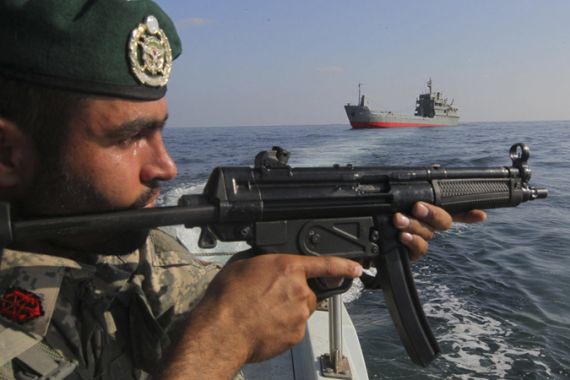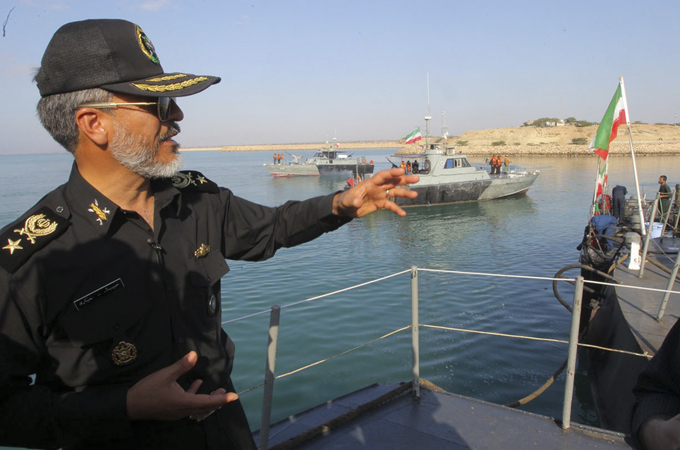Iran test fires medium-range missile in Gulf
Navy says projectile launched during drill in international waters as scientists say they have created nuclear fuel rod.

 |
| The war games aim to display Iran’s military capabilities amid increasing pressure over its atomic programme [Reuters] |
Iran has successfully test fired a medium-range surface-to-air missile during navy war games taking place near the strategic Strait of Hormuz, the official IRNA news agency has reported.
“This medium-range surface-to-air missile is equipped with the latest technology to combat radar-evading targets and intelligent systems which try to disrupt missile navigation,” Mahmoud Mousavi, spokesman for the manoeuvres, was quoted as saying on Sunday.
He said it was the first time Iran had tested the missile, which was “domestically designed and built”.
Mousavi also said that the 10 days of war games were to end on Monday with all ships and submarines exercising a new tactic to practise the closure of the strait “if Iran’s navy so chooses”.
It was not immediately known whether the missile was fired from a ship or from land. Other details about the missile, including the distance it can fly, were not given.
The missile’s launch and the war games are meant to show Iran’s military capabilities at a time that the US and other Western nations are increasing pressure over Tehran’s nuclear programme.
The fact that they are taking place near the Strait of Hormuz has focused attention on Iran’s threats in recent days that it could close the narrow channel, a strategic oil route at the entrance to the Gulf, if more sanctions are imposed.
Sanctions law
In a move that could intensify a brewing Gulf showdown, US President Barack Obama on Saturday signed into law tough new sanctions targeting Iran’s central bank and financial sector.
Iran dismissed the move which aims to reduce Tehran’s oil revenues but gives the US president powers to waive penalties as required.
Mohammad Nahavandian, the head of Iran’s Chamber of Commerce, rejected the move as “unjustifiable”, saying on Sunday that such sanctions would have reciprocal consequences.
“The Iranian nation and those involved in trade and economic activities will find other alternatives,” Nahavandian said.
The US and the European Union have already pushed four rounds of sanctions through the UN over Iran’s nuclear programme and imposed unilateral measures that have deterred Western investment in Iran’s oil sector, making it harder to move money in and out of the country.
Imposing sanctions on the central bank would tighten that screw and make it more difficult for Iran to receive payments for exports – particularly oil, a vital source of hard currency for the world’s fifth-biggest crude exporter.
Iranian officials insist that foreign sanctions have had no impact on the country’s economy.
“The sanctions have raised the cost of trade and economic transactions but it has not managed to change Iran’s political behaviour,” Nahavandian said.
Nuclear feat
Iran’s leaders have shown no sign of changing the country’s nuclear course despite mounting international pressure to force it to stop.
The AP news agency reported that Iranian scientists produced the nation’s first nuclear fuel rod, a feat of engineering the West doubted Tehran was capable of.
The announcement on Sunday comes after Iran had said it was compelled to manufacture fuel rods on its own since international sanctions banned Tehran from buying them on foreign markets.
Nuclear fuel rods contain pellets of enriched uranium that provide fuel for nuclear power plants.
Iran’s atomic energy agency’s website says the first domestically made rod has already been inserted into the core of Tehran’s research nuclear reactor.
It was unclear if the rod contained pellets or was inserted empty, as part of a test.